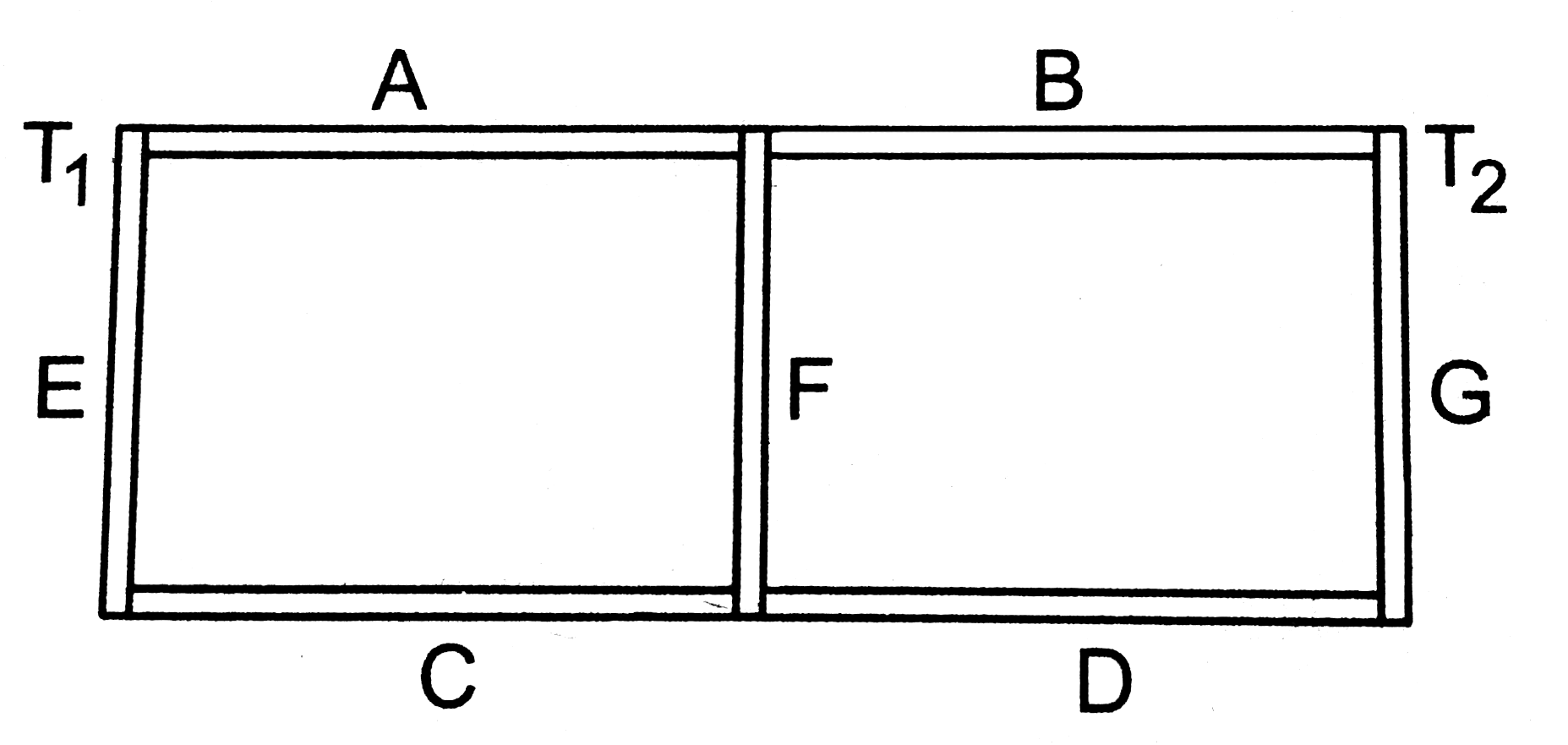A comet orbits the sun in a highly elliptical orbit. Which of the following quntities remains constant throughout its orbit ?
(i) Linear Spped (ii) Angular speed
(iii) Angular momentum (iv) Kinetic energy
(v) Potential energy (vi) Total energy
linear speed
angular momentum about the sun
kinetic energy
potential energy
The correct Answer is:B
In elliptical orbit sun is at one of the foci hence the distance between the planet and sun changes as planet revolves hence linear speed, kinetic energy and potential energy of planet of do not remain constant
Topper's Solved these Questions
Similar Questions
Two plane mirrors are inclined at 70∘. A ray incident on one mirror at incidence angle θ after reflection falls on the second mirror and is reflected from there parallel to the first mirror, The value of θ is
View SolutionSeven rods A, B, C, D, E, F and G are joined as shown in figure. All the rods have equal cross-sectional area A and length l. The thermal conductivities of the rods are KA=KC=K0, KB=KD=2K0, KE=3K0, KF=4K0 and KG=5K0 . The rod E is kept at a constant temperature T1 and the rod G is kept at a constant temperature T2(T2>T1) . (a) Show that the rod F has a uniform temperature T=(T1+2T2)/3 . (b) Find the rate of heat flowing from the source which maintains the temperature T2 .

View SolutionA planet is revolving around the sun in an elliptical orbit. Which out of the following remains constant. (a) Linear speed (b) angular momentum ( c) kinetic energy (d) potential energy (e) total energy throughout its orbit.
View SolutionA comet orbits the sun in a height elliptical orbit. Does the comet have a constant (a) linear speed (b) angular speed (c ) angular momentum (d) kinetic energy (e) potential energy (f) total energy throughout its orbit ? Neglect any mass loss of the comet when it comes very close to the sun.
View SolutionA comet orbits the Sun in a highly elliptical orbit. Does the comet have a constant (a) linear speed (b) angular speed (c) angular momentum (d) kinetic energy (e) potential energy (f) total energy throughout its orbit? Neglect any mass loss of the comet when it comes very close to the Sun.
View Solutionकोई धूमकेतु सूर्य की परिक्रमा अत्यधिक दीर्घवृत्तीय कक्षा में धूमकेतु की शुरू से अंत तक
(a) रैखिक चाल,
(b) कोणीय चाल,
(c) कोणीय संवेग,
(d) गतिज ऊर्जा,
(e) स्थितिज ऊर्जा
(f) कुल ऊर्जा नियत रहती है।
सूर्य के अति निकट आने पर धूमकेतु के द्रव्यमान में ह्रास को नगण्य मानिये।
View SolutionA comet orbits the sun in a highly elliptical orbit. Does the comet have a constant (a) linear speed (b) angular speed ( c) angular momentum (d) Kinetic energy ( e) potential energy (f) total energy throughout its orbit? Neglect any mass loss of the comet when it comes very close to the sun.
View SolutionA comet orbits the sun is highly elliptical orbit. Does a comet has a constant.
(i) angular momentum
View SolutionA comet orbits the sun is highly elliptical orbit. Does a comet has a constant. kinetic energy
View SolutionA comet orbits the sun in a highly elliptical orbit. Does the comet have constant (a) linear speed (b) angular speed, ( c ) angular momentum, (d) kinetic energy, (e ) potential energy ,(f) total energy throughout its orbit ? Neglect any mass loss of the comet when it comes very close to the sun.
View SolutionA comet orbits the sun in a highly elliptical orbit. Does the comet have a constant (a) linear speed, (b) angular speed, (c) angular momentum, (d) kinetic energy, (e) potential energy, (f) total energy throughout its orbit? Neglect any mass loss of the comet when it comes very close to the Sun.
View SolutionA comet orbits the sun in a highly elliptical orbit. Does the comet have a constant (a) linear speed, (b) angular speed, (c) angular momentum, (d) kinetic energy, (e) potential energy, (f) total energy throughout its orbit? Neglect any mass loss of the comet when it comes very close to the Sun.
View SolutionA comet orbits the sun in a highly elliptical orbit. Does the comet have a constant (a) linear speed, (b) angular speed, (c) angular momentum, (d) kinetic energy, (e) potential energy, (f) total energy throughout its orbit ? Neglect any mass loss of the comet when it comes very close to the Sun.
View Solutionकोई धूमकेतु सूर्य के परितः अत्यंत दीर्घवृत्तीय कक्षा में परिक्रमण कर रहा है। सम्पूर्ण कक्षा में धूमकेतु के लिए निम्न में से क्या-क्या नियत रहेगा - (सूर्य के अति निकट आने पर धूमकेतु के द्रव्यमान में हुई किसी भी हानि की उपेक्षा कीजिए।) (a) रेखीय चाल (b) कोणीय चाल (c) कोणीय संवेग (d) गतिज ऊर्जा (e) स्थितिज ऊर्जा (f) कुल ऊर्जा
View SolutionA comet orbits the sun in a highly elliptical orbit. Does the comet have a constant (a) linear speed, (b) angular speed, (c) angular momentum, (d) kinetic energy, (e) potential energy, (f) total energy throughout its orbit? Neglect any mass loss of the comet when it comes very close to the Sun.
View SolutionA comet orbits the sun in a highly elliptical orbit. Does the comet have a constant (a) linear speed, (b) angular speed, (c) angular momentum, (d) kinetic energy, (e) potential energy, (f) total energy throughout its orbit? Neglect any mass loss of the comet when it comes very close to the Sun.
View Solution

